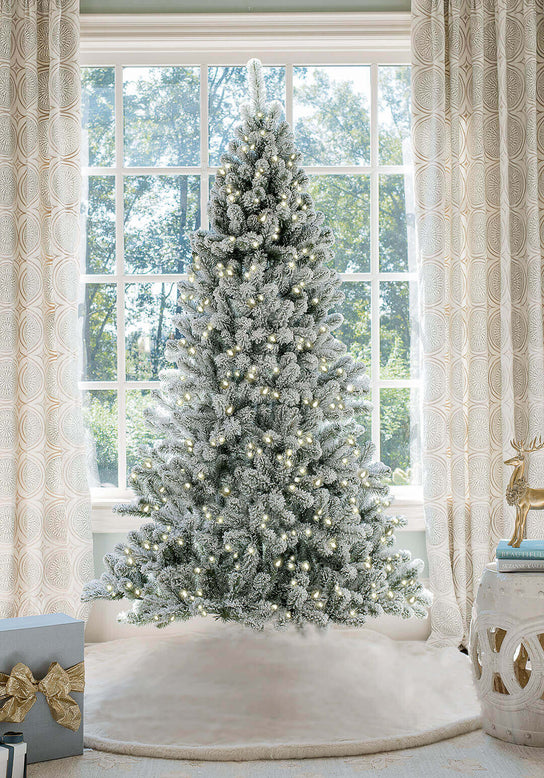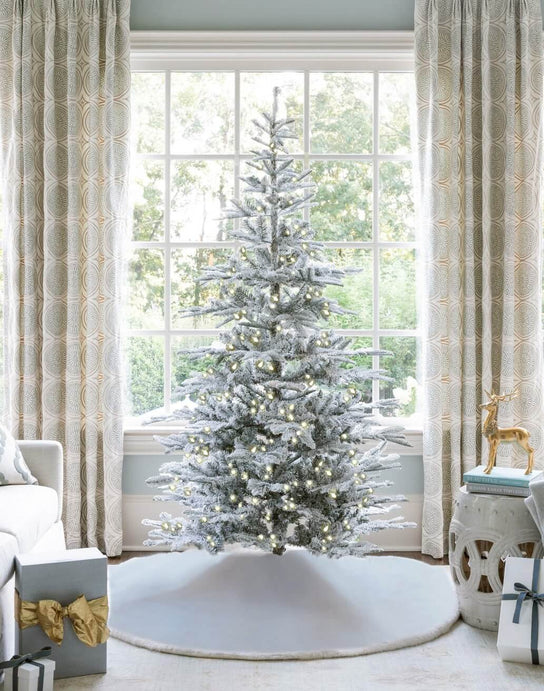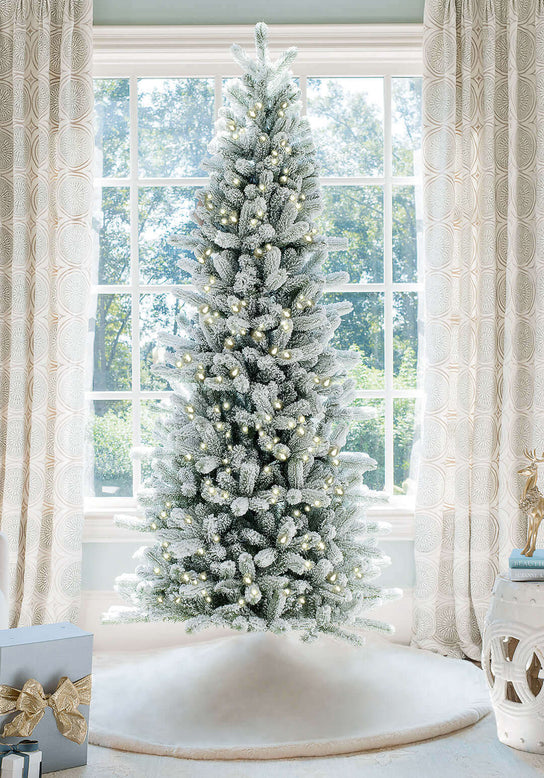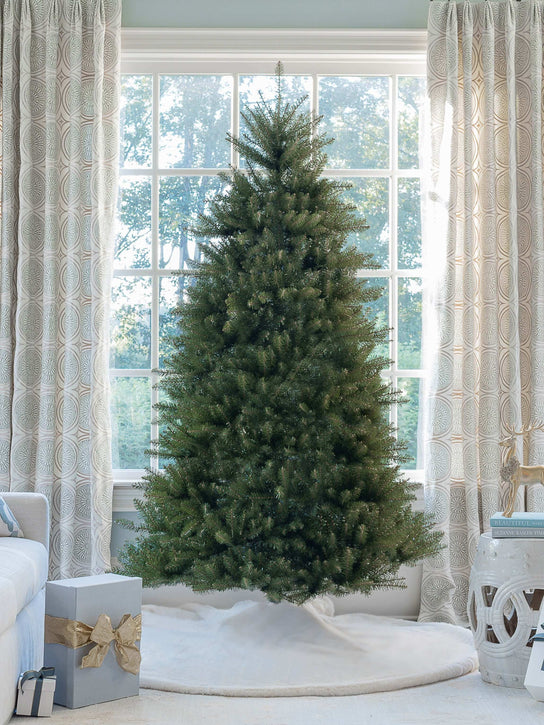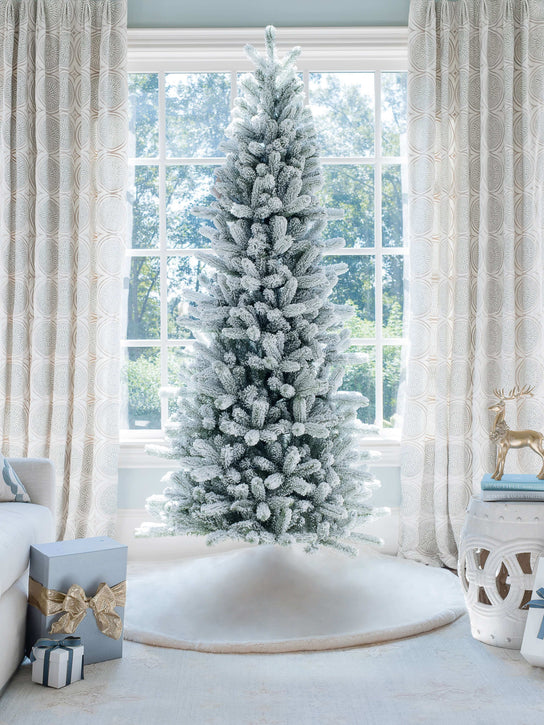Deck the Halls with King of Christmas: Exploring the Differences Between Artificial Firs and Spruces
As the holiday season approaches, many families embark on the time-honored tradition of selecting the perfect Christmas tree to adorn their homes. While firs and spruces both reign supreme in the realm of Christmas trees, there are distinct characteristics that set them apart. Join us as we delve into the world of coniferous trees and discover what makes each type unique.
Needle Shape and Arrangement
One of the most noticeable differences between firs and spruces lies in their needles.

-
● Firs: Fir trees boast soft, flat needles that are attached individually to the branch by a base. These needles exude a gentle elegance, making them a favorite among those who appreciate a more tactile experience when decorating their tree. The soft texture of fir needles makes them particularly pleasant to handle, reducing the risk of pricks and scratches.
-
● Spruces: In contrast, spruces flaunt sharp, stiff needles arranged in a spiral pattern along the branches. While they may lack the softness of firs, spruces make up for it with their robust presence and unmistakable texture. The needles of a spruce tree can be quite prickly to the touch, but their rigidity often gives them a longer-lasting appearance throughout the holiday season.
Cone Shape
Another aspect that differentiates firs from spruces is the shape and orientation of their cones.
-
● Firs: When it comes to cone production, firs opt for an upright approach, showcasing cylindrical cones that stand erect on the branches. This upright stance adds a touch of symmetry to the tree's overall aesthetic, enhancing its visual appeal. The cones of fir trees are often considered more elegant and refined, contributing to the tree's overall charm.
-
● Spruces: Meanwhile, spruces favor smaller, pendulous cones that dangle gracefully from the branches. These downward-facing cones lend a whimsical charm to the tree, capturing the essence of winter's enchantment. The hanging cones of spruce trees add a unique and playful element to their appearance, making them stand out in any setting.
Branches
The branching patterns of firs and spruces further differentiate the two species.
-
● Firs: Firs tend to flaunt branches that are more horizontally oriented, creating a dense, layered appearance reminiscent of a lush forest canopy. This horizontal growth habit provides ample space for hanging ornaments and tinsel, allowing each decoration to shine. The dense branches of a fir tree offer a more traditional and full look, making it an excellent choice for those who love to load their trees with decorations.
-
● Spruces: On the other hand, spruces feature branches that angle upwards, resulting in a more open, pyramid-like shape. This upward growth pattern offers a striking silhouette, making spruces a standout choice for those seeking a tree that commands attention. The open structure of a spruce tree allows for a more modern and minimalist approach to decorating, highlighting the natural beauty of the tree itself.
Making Your Decision
-
Choosing between a fir and a spruce tree ultimately depends on your personal preferences and holiday decorating style. If you prefer a tree with soft needles and a dense, layered appearance, a fir tree might be the perfect choice for you. On the other hand, if you appreciate a tree with sharp needles and a striking, pyramid-like shape, a spruce tree could be the ideal option.
-
Both fir and spruce trees offer their own unique charm and character, ensuring that your holiday season will be filled with joy and beauty. Whether you choose a fir or a spruce, you can rest assured that with King of Christmas, your tree will be of the highest quality and craftsmanship.
Types of Fir Trees
Fir trees come in various species, each with its own unique characteristics. Explore our bestselling family of fir trees:
-
● Alpine Fir: Known for its slender shape and blue-green needles, the Alpine Fir is a favorite for smaller spaces.
-
● Aspen Fir: With its lush, green needles and symmetrical shape, the Aspen Fir is a classic choice for holiday decor.
-
● King Douglas Fir: Renowned for its robust branches and pleasant fragrance, the King Douglas Fir is a staple in many households.
-
● King Fraser Fir: The King Fraser Fir boasts strong branches and a beautiful blue-green color, making it a top choice for heavy ornaments.
-
● King Noble Fir: This fir tree is admired for its sturdy branches and long-lasting needles, perfect for extended holiday displays.
-
● Royal Fir: The Royal Fir offers a regal appearance with its dense foliage and rich green color.
-
● Rushmore Fir: Known for its soft needles and symmetrical shape, the Rushmore Fir is a popular option for families.
-
● Scarlet Fir: The Scarlet Fir stands out with its vibrant green color and robust branches, ideal for large ornaments.
-
● Yorkshire Fir: This fir tree features soft, blue-green needles and a classic shape, making it a timeless addition to any holiday celebration.
Types of Spruce Trees
Spruce trees are also available in several species, each with its own distinct features. Our popular styles include:
-
● Cypress Spruce: The Cypress Spruce is known for its dense, blue-green foliage and sturdy branches, making it a favorite for heavy ornaments.
-
● Hancock Spruce: With its soft, green needles and symmetrical shape, the Hancock Spruce is a versatile choice for holiday decor.
-
● Tribeca Spruce: The Tribeca Spruce stands out with its unique, upward-angled branches and rich green color, perfect for a modern and minimalist look.
Quick Comparison
To summarize, here’s a quick comparison of the key features:
-
● Needle Shape and Arrangement:
Firs: Flat, soft needles attached individually to the branch by a base. Flexible and less prickly.
Spruces: Sharp, stiff needles arranged in a spiral pattern. Prickly to the touch.
-
● Cone Shape:
Firs: Upright cylindrical cones that stand erect on the branches.
Spruces: Smaller, pendulous cones that hang downward from the branches.
● Branches:
Firs: Horizontally oriented branches, creating a dense, layered appearance. Spruces: Upwardly angled branches, resulting in a more open, pyramid-like shape.
Conclusion

While firs and spruces may share the spotlight as popular Christmas tree options, their unique characteristics ensure that each brings its own flair to the festivities. Whether you prefer the soft elegance of a fir or the robust charm of a spruce, one thing is certain – with King of Christmas, your holiday season is sure to be merry and bright.
As you embark on your quest for the perfect Christmas tree this holiday season, we hope this guide helps you make an informed decision. Remember to consider the needle shape and arrangement, cone shape, and branch orientation when selecting your tree. And most importantly, enjoy the process of decorating and celebrating with your loved ones.
For more information and to explore our exquisite selection of artificial fir and spruce trees, visit King of Christmas. Let the magic of Christmas fill your home with warmth and joy.
Happy Holidays!







